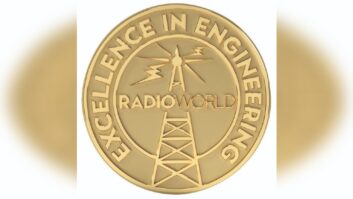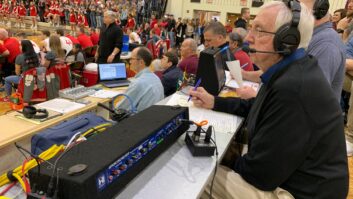In 1970, 15-year-old high school sophomore Paul Tinkle joined WCMT(AM/FM) as a “cleanup” boy.
Today he is the president and part-owner of Thunderbolt Broadcasting, which includes one AM and four FMs as well as seven translators (Tinkle calls them “local FMs”) that serve northwest Tennessee and parts of Kentucky. He is also a former member of the NAB Radio Board.
He recalls that years ago, when an engineer took ill for several months, Tinkle suddenly realized how little he knew about his own facilities. So he started to bone up.
Today he advocates for owners and managers to participate in the creation of maintenance programs and technical documentation, and encourages them to become familiar with their facilities and with basic engineering concepts.
His engineer visits Thunderbolt’s RF sites monthly, checking everything from the ASRN sign to the tower lights and replacing transmitter filters. Each RF site has a metal bookcase filled with equipment manuals; and Tinkle’s cellphone has the names of dozens of engineers and suppliers he could call if necessary, to help if he had an urgent problem.
Paul Tinkle wrote the following list of 57 assorted ideas, tips and best practices. He shared it with Radio World for our ebook “Mission-Critical: Maintaining Your Transmitter Site.”
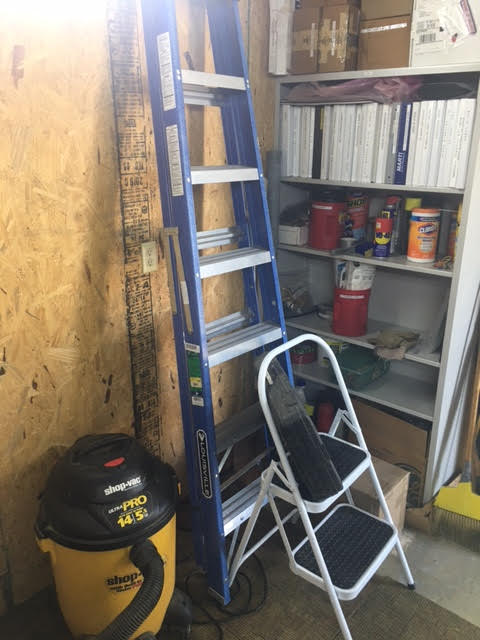
1) Purchase a label maker, and see that all equipment is labeled using the name you commonly use when referring to it. Label everything in your service rack. Label the front and back of each piece of equipment as well as where the plugs and wires are inserted.)
2) Label STLs, Marti units and other RF equipment. Include call signs. Note the date each piece of equipment went into service. Do the same for computers, noting their install date. Label the front of each satellite receiver with the name of the program associated with that receiver. Include the serial number on the front.
3) Label your station “calls” on remote gear including headphones, power cords and of course phone and RF equipment that is used on the road. Take a photo of your remote gear with your smartphone or camera.
4) Learn how to read and take transmitter meter readings. Take the actual readings occasionally to stay fresh. Know the transmitter codes and all passwords relating to everything you own. Keep a central log of passwords, and make sure key personnel know how to access it. Change factory default passwords when new equipment arrives.
5) Make sure all EAS equipment includes written instructions on how to perform an EAS test. Keep instructions in the control room.
6) At an AM station, inspect your antenna tuning unit (ATU) at the tower base to check for snakes, birds or other unwelcome intruders or problems.
7) Confirm that your Antenna Structure Registration Number (ASRN) is displayed clearly at the tower site, that your fence is structurally sound and the gate is locked.
8) Inspect your guy wires for damaged insulators. Inspect tower anchors for possible damage due to mowing or lightning. Keep your tower site mowed and neat. FCC inspectors often can tell who’s doing a good job of taking care of their license just by looking at the grass; at least give them a good first impression.
9) Keep a spare set of keys to everything you own. Put it in your vehicle or hidden at the tower site.
10) Keep a journal or notebook — not just a legal pad — at the remote tower site; mandate that anyone who enters the tower building log tower readings and the time they came in and out of your building and the site. Keep a copy of your “vital” records — e.g. the license — in a binder, in plastic sheets. This includes STL (license) path information and transmitter info. Having these at the tower site allows you to access information like transmitter power out (TPO) quickly.
11) Keep a spare tube and parts kit for your transmitter and other vital equipment close by. This includes a fan.
12) At the tower site, keep a set of basic tools and a first aid kit. Also put in a supply of drinking water, paper towels, hand sanitizer, toilet paper and a cot for resting. Engineers may need to take a break, especially if they’ve been working on equipment all night. At some remote sites, for instance where weather might shutter someone in, consider supplies for a longer-term stay such as blankets and non-perishable food.
13) Change or clean all filters on transmitters and HVAC units.
14) Clean all transmitter and computer filters monthly. Suck out the dust for longer life!
15) Keep a Shop-Vac or similar wet/dry vacuum at the site to help keep the building and equipment clean.
16) Store several flashlights and batteries in your building (including studio control rooms too). Check your smoke detectors annually for performance. Change batteries when you adjust your clocks twice a year.
17) If you have a generator, check it monthly and exercise it weekly. Ensure that you have extra oil and coolant. Check the fuel level. Log it in your journal and write down the hours it was exercised. Put it “online” at least every month.
18) Personally inspect your towers at night to confirm that all bulbs are burning. Inspect the tower to confirm it will pass FCC paint regulations.
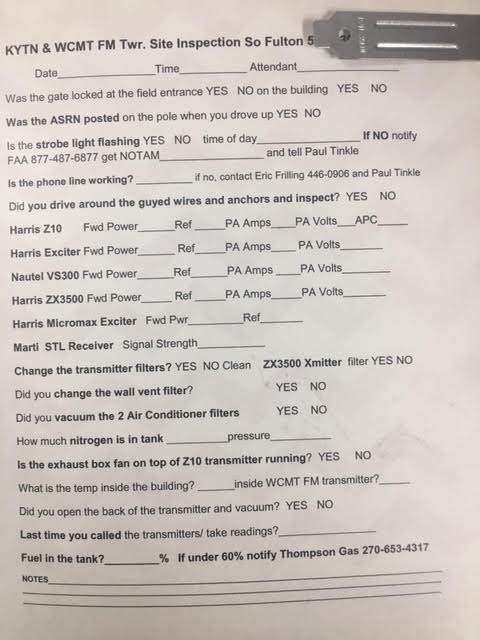
19) When a bulb goes out, document that you have notified the appropriate officials. Keep the Flight Services NOTAM line phone number (877-487-6867) and your ASRN at hand. Store the ASRN for each site in your smartphone.
20) At AM stations, confirm that your annual NRSC Occupied Bandwidth Measurement and Frequency Test was done within the past 14 months and have it ready for the FCC upon request.
21) Visually inspect your STL, Marti and other auxiliary antennas. Are they secure on your service tower? Check that wind has not damaged or loosened radials.
22) Walk around the back of your radio station and transmitter building to see if anything is out of place. This could be anything such as loose cables, vandalism damage, or strange visitors — cats, rats, snakes, deer, bear, opossum, turkey or groundhogs.
23) Keep spare tools in your vehicle including an air pump for flat tires or slow leaks that happen while you are at the tower site. It will happen.
24) Keep wasp/hornet repellant available. Always have duct tape on hand. It can fix most problems.
25) Show full- and part-time employees where vital controls are located including the electrical breaker box. Label your breakers in the electrical box.
26) Communicate with your engineer regularly, especially if something doesn’t seem right.
27) Instruct part-timers how to turn on and turn off vital equipment such as a backup transmitter.
28) Place combination locks on all gates and tower entrances. Cover them with a piece of rubber tire and a potato chip clip to keep moisture out and prevent freezing.
29) Keep good records about your equipment, including pictures of all devices. Your smartphone is your friend.
30) If you ship a piece of equipment for repair, tape your business card to it. Use your label maker and put your company’s name on the equipment. (If you put your bumper sticker on it, they will definitely know whose it is.)
31) Be proactive. Ask your engineer what they need to do their job better. Sometimes it’s just an extra roll of tape or a new soldering iron. Sometimes they might tell you something really important that you didn’t know.
32) Document everything. Keep a paper trail for things you do, things the engineer does, things that need to get done, things that got done and things that are undone.
33) Write or print legibly.
34) Teach others in your radio station family the important things. Any DJ/announcer, office manager or newsperson might have to fill in suddenly.
35) If you have a remote vehicle, drive it yourself, inspect it for damage and keep a service record. Check the tires and alignment. It may pull to one side or make a noise; it may need to be cleaned of trash. If connected to remote gear, make sure you have tested it personally.
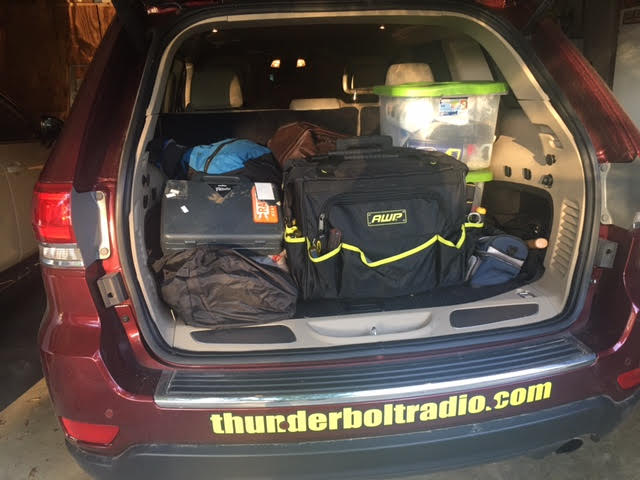
36) Inventory any play-by-play equipment. Learn what needs to be replaced or repaired and is being treated professionally. Put headphones in one- or two-gallon plastic freezer bags, available at your local grocer or box store.
37) If there’s a problem at the transmitter site, tell your engineer you want to come watch or hold the flash light — to learn, to help and to keep them company.
38) Find out where the FCC rules are kept in the radio station, tell the staff and encourage everyone to read them.
39) Participate in your state’s Alternative Broadcast Inspection program. This is great insurance. It helps your engineer keep equipment running smoothly and in tolerance, and keeps your staff aware of EAS rules.
40) When in doubt about FCC rules and regs, contact your FCC attorney. Spend the money to keep your radio station legal. It’s better to spend money on engineering than wait and send money to the FCC to resolve a Notice of Apparent Liability.
41) Get to know people in the technical community. Network at your state broadcast association’s events. Keep contact names of helpful people at key equipment suppliers. Ask your engineer, “Who are the people you would want me to call if you were in the hospital?
For the engineers
42) Engineers: “Communicate before you medicate.” Let the manager or PD know that you’re planning to take the station off the air. Sometimes really are better than others for routine service.
43) Ask for the equipment you need to keep the station running smoothly. Ask again and again. Research your request with costs and how they will help the station, whether to stay on the air or to clean up noise.
44) Remember to put things away after you have completed a project. Put all the fasteners (nuts and bolts) back in the equipment.
45) Keep good notes.
46) Don’t put yourself in harm’s way. Slow down when working with RF. Turn off the main power to the transmitter. If you disconnect the failsafe, remember to put it back in place and confirm it’s functioning. Work with a partner if at all possible.
47) Provide your password to the manager so they can be helpful to you when you’re unable to come right away.
48) Make a date with the manager to show them what you believe needs to be done to assure that the radio station continues to run smoothly.
49) Make sure you have all the spare parts you need to keep your radio station on the air.
50) Show your manager the projects you have accomplished.
51) Neatness matters. Labeling is a must.
52) Date everything regardless of when it was received, installed or pulled out of service.
53) When there is an emergency and you get the call, communicate with management when you are likely to appear on the scene.
Final thoughts
54) Managers: Emergencies are never so big that it you need to put the engineer in harm’s way.
55) Managers: Don’t try to fix what you don’t know how to fix. Engineers should not need to fix what you’ve tried to fix.
56) Managers: Be patient with your engineer.
57) Engineers: Be patient with your manager.
Comment on this or any story. Email [email protected] with “Letter to the Editor” in the subject field.






